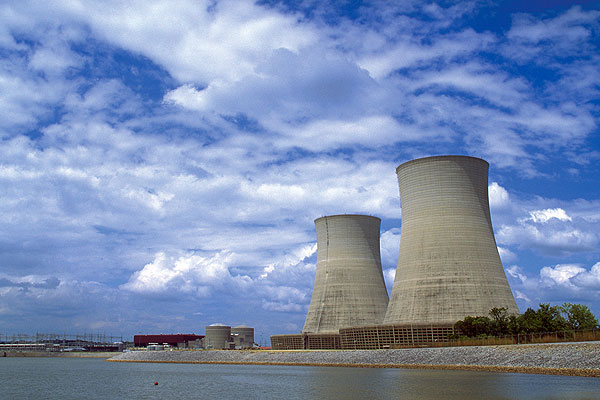
* MSNBC’s Bill Dedman takes a long, detailed look at some of the issues I raised the other day, about seismic risks to U.S. nuclear power plants. It may relieve you somewhat to know that of the country’s plants ranked by earthquake risk, Illinois has none in the top 30. Coming in at #31 are the two Quad Cities plants in Cordova, due west on the Iowa border.
* The Quad Cities plants have been in the news as potential risks in the past, though for other reasons, like a $330,000 fine for a 1997 incident, shutdown and fire-containment issues that led to a lengthy shutdown, and a radiation-exposure case.
* The U.S. plant with the highest earthquake risk is one of the Indian Point plants in Buchanan, NY. It was the subject of a Village Voice investigation in 2002, on the subject of spent fuel rods:
Indian Point, like most nuclear plants in the U.S., stores its spent fuel rods in covered pools. Drain the water—by breaching the wall or displacing the liquid with another object or just siphoning it off—and you’d have an apocalypse on your hands.
* Speaking of spent fuel rods, here’s Joshua Pollack in the Bulletin of Atomic Scientists, in a piece on safety reforms to consider in the wake of the Fukushima crisis:
One obvious consequence-reduction strategy is to remove the most dangerous substances from the scene. The time is long past to start moving highly radioactive spent fuel away from reactor sites and into long-term, secure storage. As of this writing, the condition of the spent-fuel ponds at Fukushima appears to be deteriorating — a wake-up call in the best case, and a nightmare in the worst case. Especially compared to current practices, deep borehole disposal looks highly attractive.
As you can see from this diagram, the spent fuel ponds at Fukushima are located in right next to the reactor.
* Also from the Bulletin, Frank Von Hippel on lessons unlearned from Three Mile Island.
* The Union of Concerned Scientists is releasing transcripts of its press teleconferences, which have been a good rundown on the technical issues involved. Expect to hear more about dry cast storage and their relationship to spent fuel ponds:
Since 9/11, one of the things we’ve been advocating that would help in this regard now is the way we manage the spent fuel risk at U.S. nuclear power plants. We basically wait until the spent fuel pools are filled with irradiated fuel, and then we slowly transfer fuel from the pools into dry cast storage on site, keeping the pools basically filled and incrementally adding dry cast on the site. It would be difficult to make that risk any higher than the way we do it.
The smarter way to do it would be to reduce the inventory of irradiated fuel in the spent fuel pools by accelerating the transfer into dry cast storage. That would result in more dry casts being stored on site, so the risk from dry cast storage would increase with this method, but the risk reduction you get in the spent fuel pools is so large that it more than offsets the increase on the dry cast storage side, resulting in a significant reduction in the threat profile from both safety events and security events.
Photograph: TVA Web Team (CC by 2.0)


